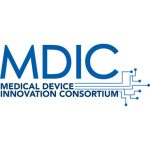Combination products are a major growth area for life science companies and in the future, many companies have or will have combination products in their portfolio. Combination products are made of drug, device and/or biologics constituent parts. Each constituent part has its own set of regulations to which it must adhere. For example, even if the combination product is a pre-filled syringe that is registered as a drug, the syringe itself must meet some requirements of the Medical Device Directive in Europe or FDA’s Medical Device Regulations in the United States.1,2 As a result, companies have to deal with drug or device areas with which they are less familiar and that do not fit into their typical organizational structures. In the pre-filled syringe example, a life sciences company may have to consider compatibility issues for the drug and device part or may need to conduct human factors studies or device risk assessments that consider use error.
How can companies effectively leverage existing processes and structures to stay compliant and operationally effective for combination products or devices in their portfolio?
Companies need to review and align pre- and post-marketing processes, governance and technology in order to successfully integrate combination products in their portfolio. Although many device, drug and biologics processes are similar, there are differences in approach that need to be addressed early in order to stay compliant. To ensure full communication between drug and device experts, organizations need to align stakeholders that have traditionally not interacted. Complex mechatronic drug-delivery systems may require knowledge exchange between software engineers, industrial designers and medical experts. In such an environment, data reconciliation and the definition of a master data set is important when, for example, safety and quality data is spread across multiple functions and database systems. Finally, any realignment of organizational structures, processes or technologies requires top management buy-in and approval, making this a major change initiative in any pharmaceutical, biologics or device company.
Increased Regulatory Focus on Safety, Compliance and Oversight
Combination product and medical device legislation increasingly focuses on safety, compliance and oversight. For example, the draft European Medical Device Regulation calls for increased device vigilance, better enforcement of legislation via Notified Bodies and public access to clinical evaluation data.3 The FDA Final Rule on Unique Device Identification (UDI) requires combination product manufacturers to register their product on a publicly searchable website and include a UDI code on the label or product itself, if the combination product is registered as a device.4
As more pharmaceutical companies integrate biologics or medical devices into their portfolio, the existing pharmaceutical governance models, processes and supporting databases are tested to their limits. It becomes clear that these limits are reached when one looks at regulatory inspection findings. The FDA has issued a number of warning letters for non-compliance or inadequacies in the area of quality and safety for combination products (e.g., Amgen and Baxter).5,6 Typical observations in these and other FDA warning letters and inspection reports for combination products include:
- Lack of clear governance and insufficient collaboration across different stakeholders
- Inadequate implementation of cross-functional processes, such as quality management, complaint handling or medical device reporting
- Lack of end-to-end oversight
- Insufficient safety data analysis and reconciliation of quality and safety data
- Insufficient alignment of regulatory pathways and requirements. For example, following both device Quality System Regulations (QSR) and current Good Manufacturing Practices (cGMP)
- Inadequate understanding of the relationship between adverse events and device design
Benefits for aligning drug and device organizations, processes and governance models
|
Establish Crossfunctional Practices as a Way of Integrating Combination Products
Companies can ensure compliance and operational effectiveness for medicinal products as well as combination products or devices in their portfolio by reviewing and aligning processes, governance and supporting technology. In most cases, the companies do not need parallel organizations or processes to manage combination products or devices, but they do need to establish clear roles and responsibilities, a crossfunctional approach and best practices in use of technology. The following key initiatives should be implemented.
Proactive cross-functional governance and organizational model for safety reporting. Pharmaceutical companies typically have a Drug Safety function for adverse event collection, assessment and reporting. This function is usually separate from the quality function that receives product-related complaints due to, for example, production or packaging issues. For combination products and devices, device users usually report adverse events, malfunctions or incidents as product complaints to the regulatory or quality function. For example, if the plunger of a syringe breaks during use, the user may issue a product complaint; a patient may not necessarily have been harmed, but the failure may have to be reported to authorities. European device vigilance system requirements and FDA Medical Device Reporting (MDR) rules require many malfunctions, design errors, user errors, labeling deficiencies or misuses to be reported to authorities.7,8 Similarly, risk management for devices is a proactive technique to identify all possible failure modes or harms that can occur during production and use, or are the result of an inadequate product design. The additional complexity that a drug or device constituent part brings to a combination product requires companies to collaborate closely across traditionally disconnected functions.
Aligned drug and device processes. Many pre- and post-marketing device processes are broadly similar to drug processes. However, tasks such as submission management, collection of regulatory intelligence or liaising with authorities quickly become inefficient and counterproductive if the pharmaceutical approach is taken without understanding device specific requirements. For example, a regulatory strategy to marketing a combination product as a device in Europe requires following a risk-based approach to obtain a CE mark, setting up a Quality Management System, working with Notified Bodies, and collecting clinical evidence (which does not necessarily mean running clinical trials), as described in the European MDD.1 Many parts of existing pharmaceutical processes can be used, and, for example, GMP processes may be largely sufficient for the Quality Management System.9 Nevertheless, a gap analysis is required to identify process shortcomings and create a plan on how to bridge these gaps.
Forward-looking UDI and IDMP integration. By 2016, drugs in Europe must adhere to the Identification of Medicinal Products (IDMP) legal requirements.10 Some devices in the United States must already comply with Unique Device Identification (UDI) requirements, depending on their risk class and product characteristics.4 Many elements, such as unique identification and traceability, are similar in both regulations. For maximum efficiency, a product portfolio that contains drugs, combination products and devices should therefore invest in an organizational setup and database system that covers both IDMP and UDI requirements. Ensuring data consistency across the organization will require a fundamental rethinking of data and system governance. This approach to Master Data Management (MDM) creates a system with a single point of view and clear ownership of product data. It ensures that companies comply with the new regulations but that they also achieve the greatest return from their investments. An enlightened understanding of UDI and IDMP allows for full mining of the newly generated data.
Conclusion
In order to achieve success in the points discussed, top-level management must support any change initiatives. New governance structures or IDMP and UDI integration are large topics that deliver significant benefits but require a willingness to break with the old and try the new. Typically, this requires the support of the Chief Medical Officer, Chief Information Officer, and Head of R&D. Where internal initiatives cannot break through existing barriers, external consultants may be able to provide an outsider’s perspective and bring experience from similar projects at other companies.
References
- Essential Requirements in Annex I of the Medical Device Directive (MDD), Council Directive 93/42/EEC of 14 June 1993 concerning medical devices, OJ No L 169/1 of 1993-07-12, including amendments.
- Code of Federal Regulations Title 21, Volume 8, Title 21 — Food and Drug Chapter I — Food and Drug Administration, Department of Health and Human Services, Subchapter H – Medical Devices.
- European Medical Device Regulations (MDR). Revisions of Medical Device Directives. Accessed May 12, 2015. Retrieved from: http://ec.europa.eu/growth/sectors/medical-devices/regulatory-framework/revision/index_en.htm.
- Federal Register, 24 September 2013, Unique Device Identification System – Final Rule, Accessed May 12, 2015. Retrieved from: http://www.gpo.gov/fdsys/pkg/FR-2013-09-24/pdf/2013-23059.pdf.
- U.S. Food and Drug Administration. Inspections, Compliance, Enforcement, and Criminal Investigations, Amgen, Inc., Warning Letter. January 27, 2014, Accessed 10 May 2015. Retrieved from: http://www.fda.gov/ICECI/EnforcementActions/WarningLetters/ucm385288.htm.
- U.S. Food and Drug Administration. Inspections, Compliance, Enforcement, and Criminal Investigation, Baxter Healthcare Corp, Warning Letter, January 17, 2014. Accessed May 10, 2015. Retrieved from: http://www.fda.gov/ICECI/EnforcementActions/WarningLetters/ucm384682.htm.
- MEDDEV 2.12/1 rev. 8, January 2013, Guidelines on a medical devices vigilance system
- Code of Federal Regulations Title 21, Volume 8 (2013). Title 21 — Food and Drug Chapter I — Food and Drug Administration, Department of Health and Human Services, Subchapter H – Medical Devices, Part 803 Medical Device Reporting.
- Federal Register, 22 January 2013, Current Good Manufacturing Practices for Combination Products, Final Rule. Accessed May 12, 2015. Retrieved from: http://www.fda.gov/downloads/CombinationProducts/UCM336194.pdf.
- European Medicines Agency, 2014, Reporting requirements for marketing-authorization holders. Accessed May 12, 2015. Retrieved from: http://www.ema.europa.eu/ema/index.jsp?curl=pages/regulation/general/general_content_000594.jsp&mid=WC0b01ac058078fbe1.





